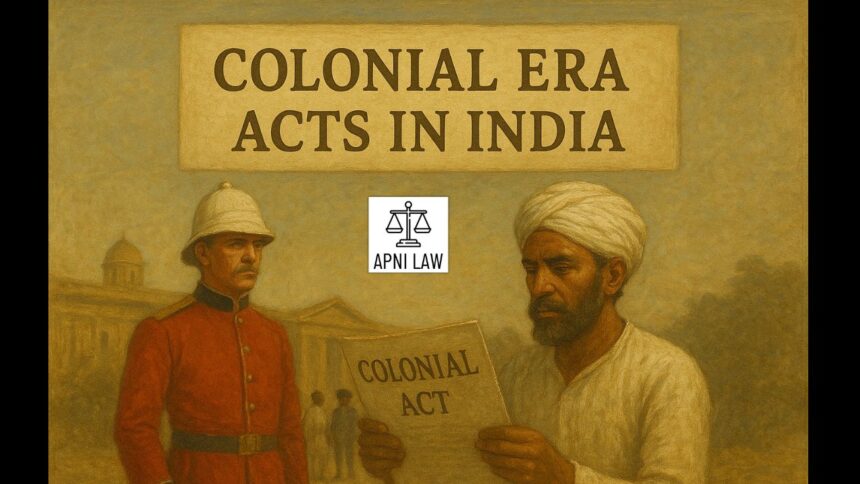Introduction
The Charter Act of 1833 was one of the most defining moments in India’s colonial history. It signaled the end of the East India Company’s trading role and marked the beginning of India’s transformation into a fully centralised colony under British control. For the first time, political power, administrative authority, and legislative control were brought under one centralised system, reshaping how India was governed. The Act also introduced progressive ideas such as equality in public employment and legal codification, though in practice these ideals were only partly realised. By examining the Charter Act of 1833 in depth, we understand how it fundamentally altered the relationship between Britain and India and laid the foundations for the administrative framework that shaped India until independence.
Background of the Charter Act of 1833
Before 1833, the East India Company enjoyed both commercial and administrative powers in India. Earlier Charter Acts such as those of 1793 and 1813 had tried to regulate its functioning. The Charter Act of 1813, for example, ended the Company’s monopoly over trade with India but retained its monopoly in tea and trade with China. By the 1830s, however, the tide had turned against the Company’s commercial role. Growing political pressure in Britain, criticism of corruption, and the demands of free trade advocates pushed Parliament to end the Company’s trading functions once and for all.
The Napoleonic Wars had already changed the global economy, and Britain wanted to expand its trade freely without the Company’s monopolistic barriers. At the same time, India had become too vast and complex to be administered through scattered presidencies with different legislative authorities. The need for a uniform and centralised system of governance was strongly felt, and this need gave birth to the Charter Act of 1833.
Key Provisions of the Charter Act of 1833
The Charter Act of 1833 was revolutionary for several reasons. First, it abolished the East India Company’s trading functions entirely. From this point onward, the Company ceased to be a commercial body and became solely an administrative and political agency of the British Crown. This change represented a complete separation of commerce and governance, something that earlier Acts had only partially achieved.
The Act also elevated the Governor-General of Bengal to the position of Governor-General of India. This move was a major step toward centralisation. Lord William Bentinck, the first to hold this new title, now had authority over the presidencies of Bombay and Madras, ending their legislative independence. All law-making powers were vested in the Governor-General in Council, ensuring uniformity in legislation across British-controlled India.
Another landmark provision was the establishment of the first Law Commission, chaired by Lord Macaulay. The Commission was tasked with codifying Indian laws, and its most enduring contribution was the drafting of the Indian Penal Code, which came into effect in 1860 and continues to influence Indian law today.
The Act also introduced the principle of equality in public employment. It declared that no one should be excluded from government jobs on the grounds of race, religion, or descent. While this was a progressive step in theory, its actual implementation was minimal, as colonial authorities continued to reserve the higher posts for Europeans. Nevertheless, the inclusion of this principle marked the beginning of a legal acknowledgment of equality.
Impact of the Charter Act of 1833
The Charter Act of 1833 left a profound impact on India’s political and administrative structure. By abolishing trade, it ended the dual role of the East India Company and turned it into a purely governing body. This change brought clarity to its purpose and aligned its operations more directly with British imperial interests.
The centralisation of legislative powers marked a turning point. For the first time, India had a uniform authority making laws for the entire country, which increased efficiency and consistency. However, it also reduced the autonomy of provinces such as Bombay and Madras, creating tensions that highlighted the drawbacks of over-centralisation.
The introduction of the Law Commission and codification of laws was another long-lasting legacy. The Commission’s work provided India with a structured legal framework that continues to this day. Laws such as the Indian Penal Code and Civil Procedure Code were direct outcomes of this initiative, ensuring that India had a codified and systematic legal system instead of a patchwork of local practices.
The principle of equality in public services, though not implemented sincerely, sowed the seeds of later demands for fairness and representation. Indian leaders in the nationalist movement would frequently point to this provision, arguing that even British law recognised the need for equality, but colonial authorities had failed to uphold it.
Criticism of the Charter Act of 1833
Despite its importance, the Charter Act of 1833 faced strong criticism. Its centralising tendencies were seen as excessive and insensitive to India’s diversity. By concentrating all legislative power in Calcutta, the Act ignored the cultural and administrative differences of regions such as Bombay and Madras. Critics argued that this one-size-fits-all approach undermined the federal spirit and stifled regional autonomy.
The equality clause, though significant on paper, was never seriously implemented. Discrimination continued in government jobs, with Indians largely confined to lower positions. This gap between law and practice exposed the hypocrisy of colonial governance and later fueled discontent.
Moreover, while the Act aimed to modernise governance, it did not create any space for Indian representation in legislative councils. This exclusion highlighted the colonial government’s reluctance to give Indians any real voice in their own administration, a factor that would become a major issue in later constitutional reforms.
Historical Significance of the Charter Act of 1833
The Charter Act of 1833 is historically significant because it marked a clear transition from commercial colonialism to administrative colonialism. The East India Company was no longer a trader but purely a ruler, and India was no longer just a collection of territories but a centralised colony under British authority.
The creation of a centralised legislative system provided uniformity in governance, which was both an advantage and a disadvantage. It made law-making more efficient but also alienated regions that felt their unique needs were ignored.
Perhaps the most enduring contribution of the Act was the establishment of the Law Commission. The codification of laws gave India a legal system that continues to underpin its judiciary today. Even though colonial motives were at play, the result was the creation of a modern, codified legal framework that outlasted British rule.
Frequently Asked Questions (FAQ)
1. What was the main purpose of the Charter Act of 1833?
The main purpose of the Act was to end the East India Company’s trading activities and establish a centralised system of governance under the Governor-General of India.
2. Who was the first Governor-General of India under the Charter Act of 1833?
Lord William Bentinck became the first Governor-General of India after the Act elevated the position from Governor-General of Bengal.
3. What was the role of the Law Commission set up under the Charter Act of 1833?
The Law Commission, chaired by Lord Macaulay, was tasked with codifying Indian laws. Its most notable achievement was drafting the Indian Penal Code, which remains a cornerstone of Indian law.
Conclusion
The Charter Act of 1833 remains a landmark in India’s colonial history. By abolishing the East India Company’s commercial role and making it a purely administrative body, it redefined the nature of British rule. The centralisation of power in the Governor-General of India created a uniform system of governance, while the establishment of the Law Commission provided India with a codified legal framework. The equality clause, though more symbolic than real, represented the first acknowledgment of merit in public service.
While the Act strengthened British control and reduced provincial autonomy, it also laid the groundwork for legal and administrative systems that continue to shape India today. In short, the Charter Act of 1833 was the moment when India truly became a centralised colony, setting the stage for the next century of British rule.
For any specific query call at +91 – 8569843472








